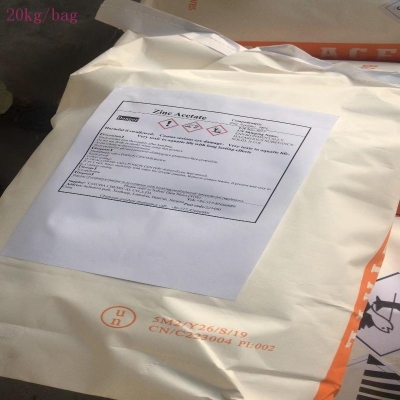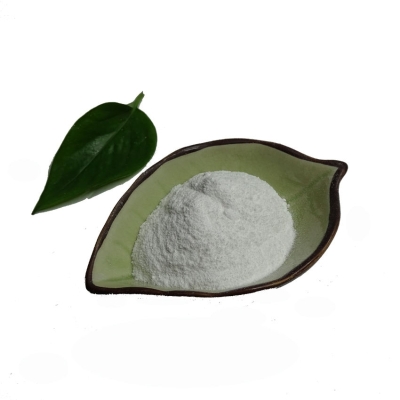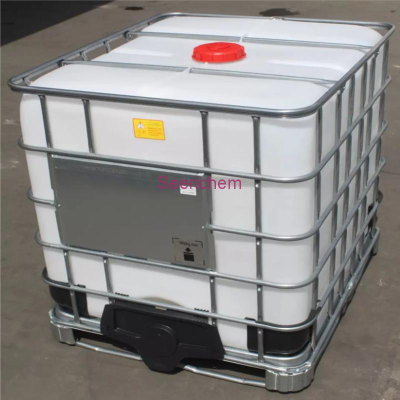-
Categories
-
Pharmaceutical Intermediates
-
Active Pharmaceutical Ingredients
-
Food Additives
- Industrial Coatings
- Agrochemicals
- Dyes and Pigments
- Surfactant
- Flavors and Fragrances
- Chemical Reagents
- Catalyst and Auxiliary
- Natural Products
- Inorganic Chemistry
-
Organic Chemistry
-
Biochemical Engineering
- Analytical Chemistry
-
Cosmetic Ingredient
- Water Treatment Chemical
-
Pharmaceutical Intermediates
Promotion
ECHEMI Mall
Wholesale
Weekly Price
Exhibition
News
-
Trade Service
On April 6, the China Nitrogen Fertilizer Industry Association held a training meeting on the nitrogen fertilizer industry carbon trading market in Jinan.
It is understood that the national carbon emissions trading market will be launched this year, and the nitrogen fertilizer industry will be included in the first phase of the carbon trading market.
The establishment of a carbon emission trading market will encourage and urge enterprises to reduce greenhouse gas emissions through measures such as energy conservation and process improvement.
The meeting believed that for nitrogen fertilizer companies, good carbon asset management can maximize corporate benefits.
Gu Zongqin, chairman of the China Nitrogen Fertilizer Industry Association, said at the meeting that the development of a low-carbon economy has become an inevitable choice for achieving a win-win situation for economic development and resource environmental protection.
The report of the 18th National Congress of the Communist Party of China puts low-carbon development in an important position.
The Paris Agreement came into effect on November 4, 2016.
China promised to reach the peak of carbon emissions around 2030 and strive to reach the peak as soon as possible.
This series of documents shows that low-carbon Emission reduction has become a very urgent task.
The establishment of a national carbon emission trading market is an important measure for China to reduce carbon emissions.
Through the establishment of the carbon emission rights trading market, the carbon emission rights are regarded as a commodity, and the emissions of high-emission enterprises are controlled through market means, so as to achieve the purpose of energy saving and emission reduction.
It is understood that since 2014, China has established 7 carbon trading pilots in Beijing, Shanghai, Hubei and other places.
As of November 2015, the cumulative trading volume of China’s carbon market quotas reached 46.
53 million tons, and the cumulative trading volume reached 1.
351 billion yuan.
The price is 29.
04 yuan/ton.
Gu Zongqin said that in the production of 1 ton of synthetic ammonia, the carbon dioxide emissions from coal is 4 tons and the natural gas is 2.
1 tons.
The carbon dioxide emissions from the nitrogen fertilizer industry account for 20% of the total emissions from the chemical industry.
As the first batch of key industries to participate in carbon trading, nitrogen fertilizer involves many companies and products, including synthetic ammonia, urea, ammonium bicarbonate, and nitric acid.
For the nitrogen fertilizer industry, what challenges will the implementation of "carbon trading" face? And what opportunities? Su Jianying, director of the Industry Development Department of the China Nitrogen Fertilizer Industry Association, told reporters that the country will give you an answer for synthetic ammonia.
For carbon emission quotas, third-party verification agencies go to a synthetic ammonia company to verify the company’s carbon emissions.
If the emissions exceed the quota, the company has to go to the carbon trading market to buy carbon emissions, and if the emissions are lower than the quota, the company can get the carbon trading market.
.
"One carbon emission average price 29.
04 yuan/ton, doing a good job of corporate carbon asset management can still maximize corporate benefits.
"Su Jianying said.
It is also understood that the State Council is currently actively promoting the formulation of regulations on carbon emissions trading management, and the National Development and Reform Commission is advancing the construction of a public credit platform.
In the future, all companies participating in carbon emissions trading will enter the credit platform and perform well.
Reputable companies will be "green light" in lending and market sales, while companies that do not perform or evade emission reduction responsibilities will be blacklisted and all their market behaviors will be restricted.
The training will be guided by the Climate Change Division of the National Development and Reform Commission , China Nitrogen Fertilizer Industry Association and Petrochemical Federation Chemical Talent Exchange Labor Employment Service Center co-organized.
It is understood that the national carbon emissions trading market will be launched this year, and the nitrogen fertilizer industry will be included in the first phase of the carbon trading market.
The establishment of a carbon emission trading market will encourage and urge enterprises to reduce greenhouse gas emissions through measures such as energy conservation and process improvement.
The meeting believed that for nitrogen fertilizer companies, good carbon asset management can maximize corporate benefits.
Gu Zongqin, chairman of the China Nitrogen Fertilizer Industry Association, said at the meeting that the development of a low-carbon economy has become an inevitable choice for achieving a win-win situation for economic development and resource environmental protection.
The report of the 18th National Congress of the Communist Party of China puts low-carbon development in an important position.
The Paris Agreement came into effect on November 4, 2016.
China promised to reach the peak of carbon emissions around 2030 and strive to reach the peak as soon as possible.
This series of documents shows that low-carbon Emission reduction has become a very urgent task.
The establishment of a national carbon emission trading market is an important measure for China to reduce carbon emissions.
Through the establishment of the carbon emission rights trading market, the carbon emission rights are regarded as a commodity, and the emissions of high-emission enterprises are controlled through market means, so as to achieve the purpose of energy saving and emission reduction.
It is understood that since 2014, China has established 7 carbon trading pilots in Beijing, Shanghai, Hubei and other places.
As of November 2015, the cumulative trading volume of China’s carbon market quotas reached 46.
53 million tons, and the cumulative trading volume reached 1.
351 billion yuan.
The price is 29.
04 yuan/ton.
Gu Zongqin said that in the production of 1 ton of synthetic ammonia, the carbon dioxide emissions from coal is 4 tons and the natural gas is 2.
1 tons.
The carbon dioxide emissions from the nitrogen fertilizer industry account for 20% of the total emissions from the chemical industry.
As the first batch of key industries to participate in carbon trading, nitrogen fertilizer involves many companies and products, including synthetic ammonia, urea, ammonium bicarbonate, and nitric acid.
For the nitrogen fertilizer industry, what challenges will the implementation of "carbon trading" face? And what opportunities? Su Jianying, director of the Industry Development Department of the China Nitrogen Fertilizer Industry Association, told reporters that the country will give you an answer for synthetic ammonia.
For carbon emission quotas, third-party verification agencies go to a synthetic ammonia company to verify the company’s carbon emissions.
If the emissions exceed the quota, the company has to go to the carbon trading market to buy carbon emissions, and if the emissions are lower than the quota, the company can get the carbon trading market.
.
"One carbon emission average price 29.
04 yuan/ton, doing a good job of corporate carbon asset management can still maximize corporate benefits.
"Su Jianying said.
It is also understood that the State Council is currently actively promoting the formulation of regulations on carbon emissions trading management, and the National Development and Reform Commission is advancing the construction of a public credit platform.
In the future, all companies participating in carbon emissions trading will enter the credit platform and perform well.
Reputable companies will be "green light" in lending and market sales, while companies that do not perform or evade emission reduction responsibilities will be blacklisted and all their market behaviors will be restricted.
The training will be guided by the Climate Change Division of the National Development and Reform Commission , China Nitrogen Fertilizer Industry Association and Petrochemical Federation Chemical Talent Exchange Labor Employment Service Center co-organized.







